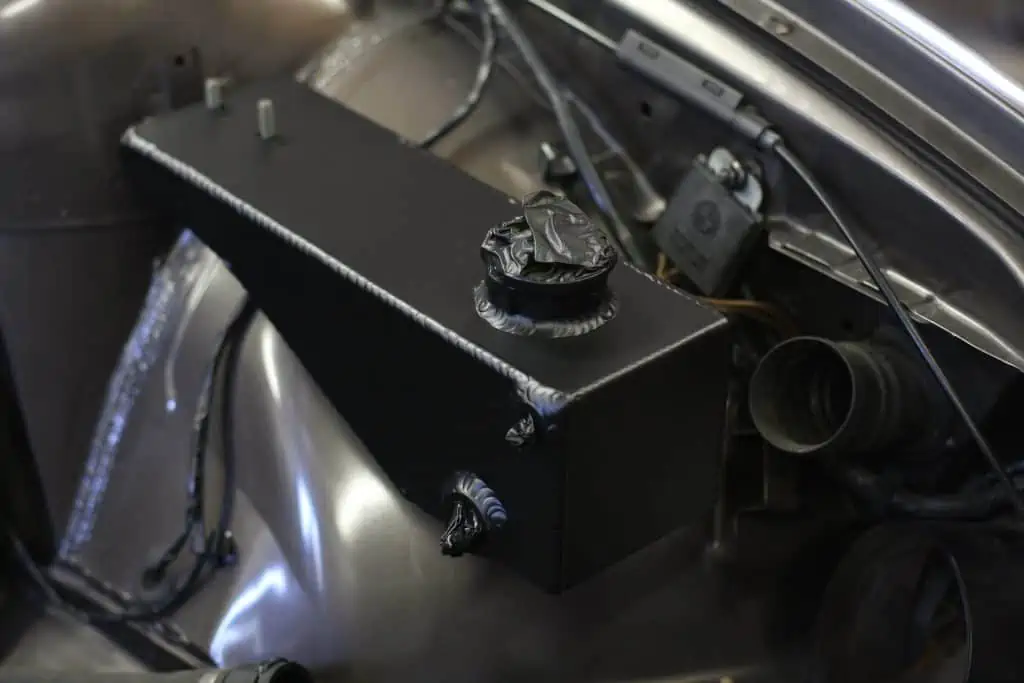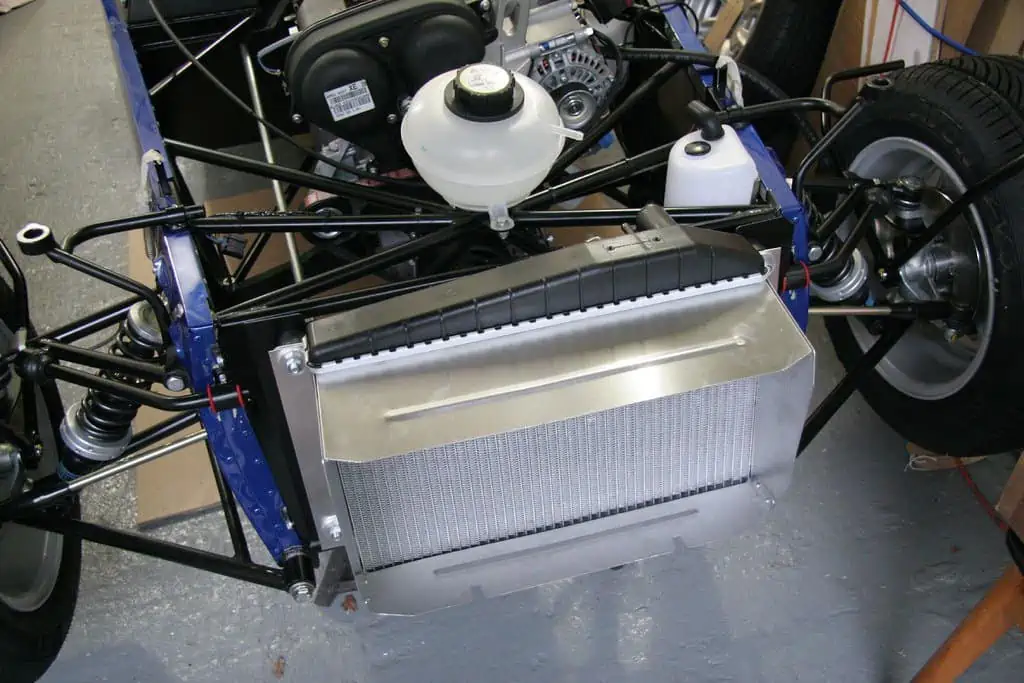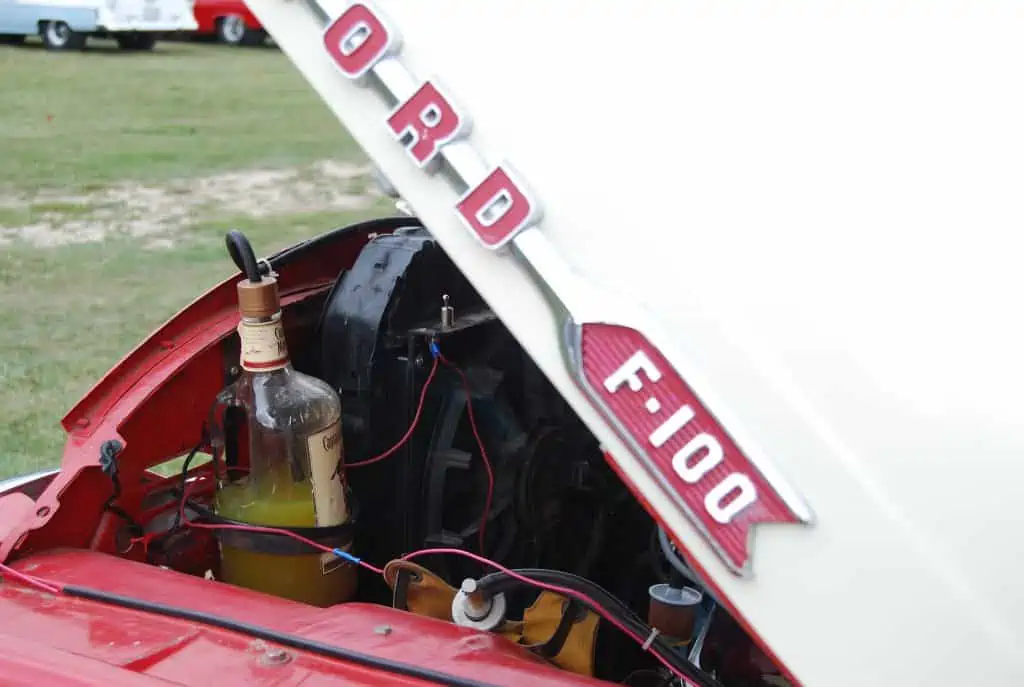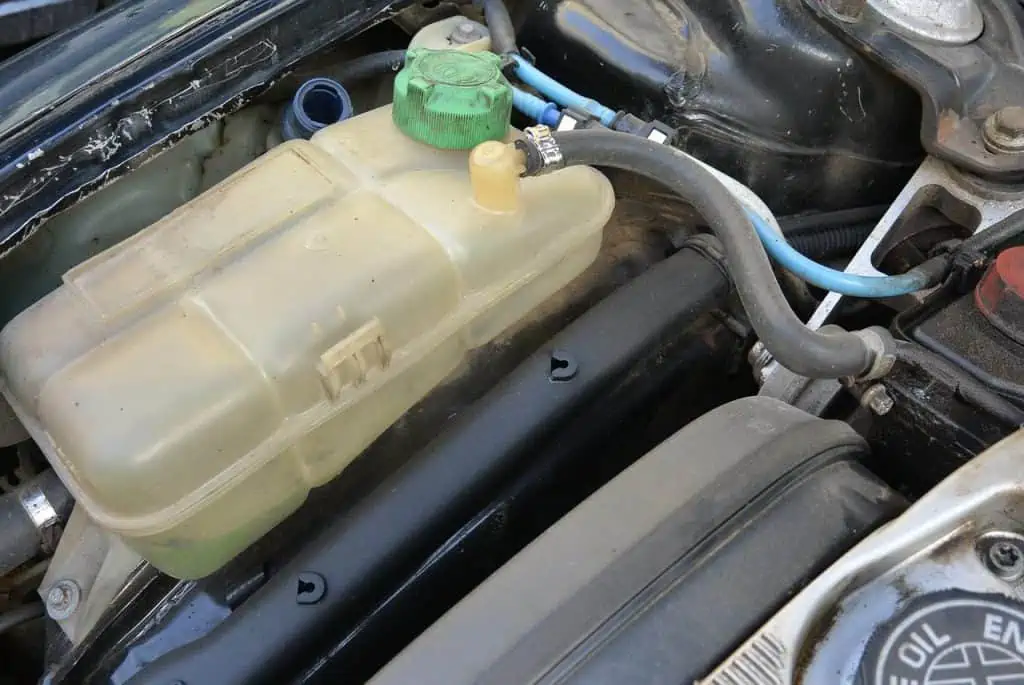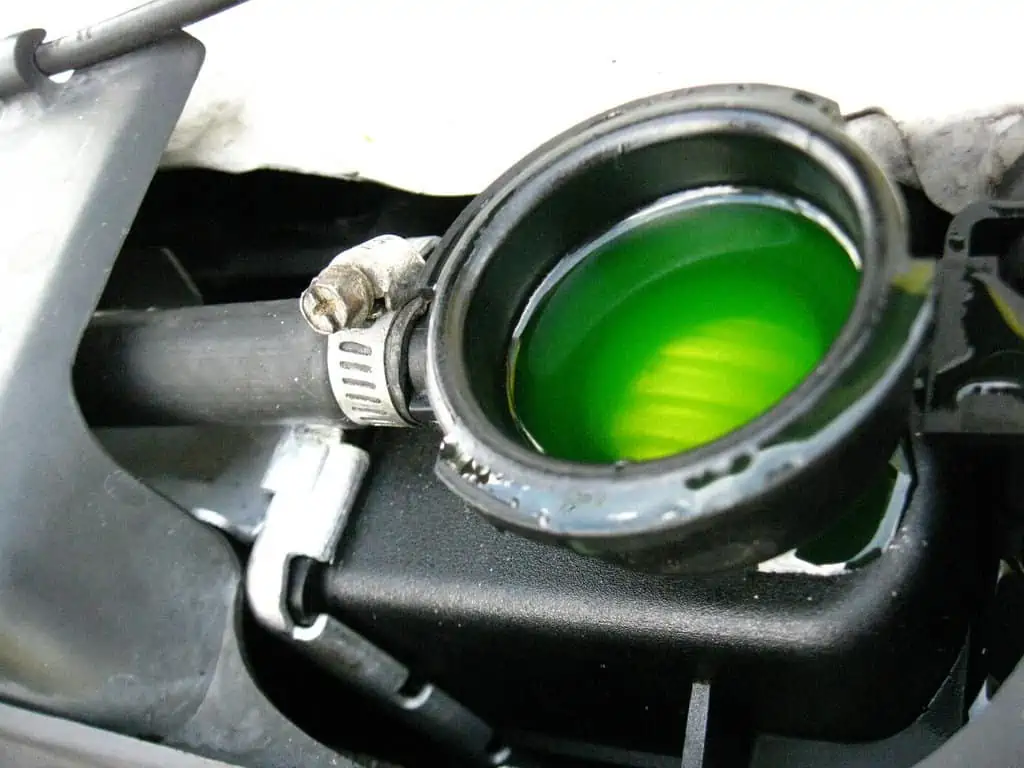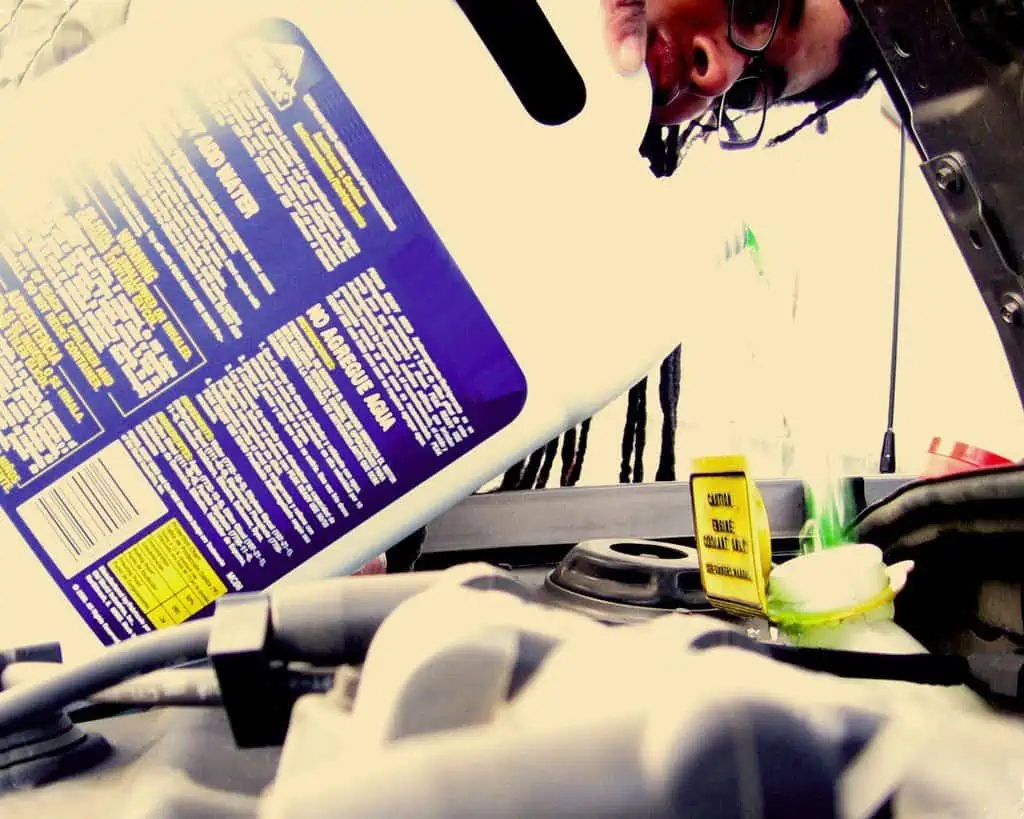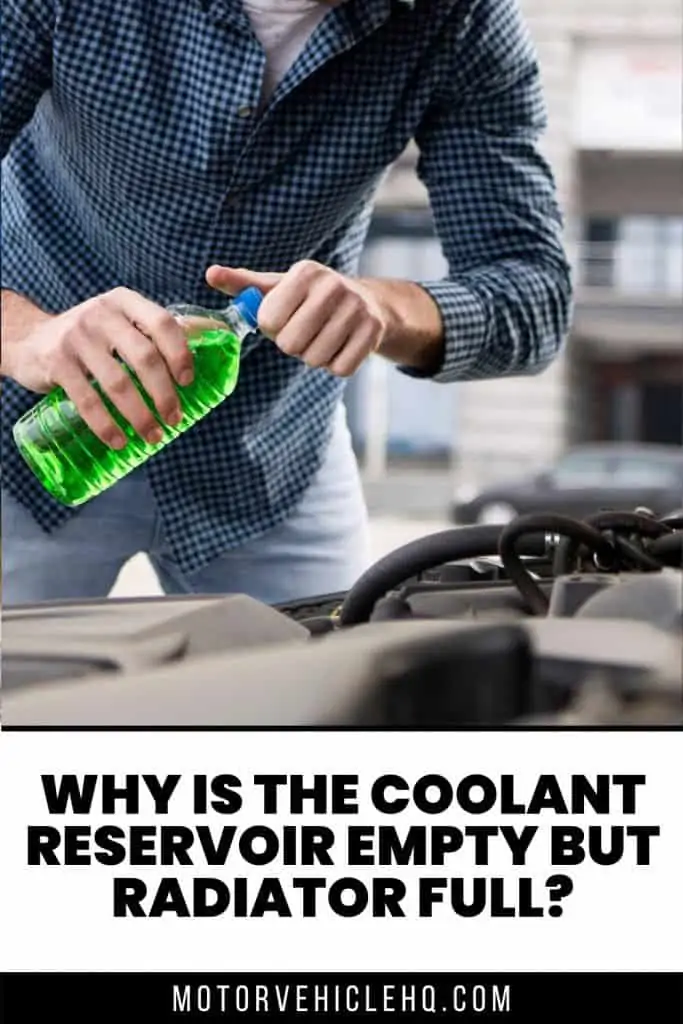Whenever you’re driving about in your automobile, the engine inside will become quite hot in a short amount of time. It’s why your automobile includes an internal cooling system to keep your engine cool and prevent it from overheating.
However, your cooling system may occasionally develop problems that prohibit it from performing its function. If you encounter a coolant reservoir empty situation, for example, it might cause problems with the cooling system and cause your engine to run much hotter than it should.
In this article, you will understand what the coolant reservoir comprises, how it functions, and what steps to take when you identify a coolant reservoir empty.
What Is Coolant?
Your engine coolant has become a vital fluid that keeps your engine running smoothly. There will be a lot of overheating concerns if you don’t have coolant, especially if you’re using water for the cooling system.
When the temperature starts to rise, coolant performs far better than water at cooling down the engine. As a result, if you experience the coolant reservoir empty, the automobile would most likely overheat.
Therefore, the greatest step to take is to keep an eye on your coolant levels at all times.
Another function of your engine coolant is to protect the engine against freezing in cold temperatures throughout the winter. At extremely low temperatures, the coolant is designed to not freeze.
Coolant reservoir painted black by RVAE34 / CC BY-NC-ND 2.0
This will aid in the maintenance of your engine and protect the block from cracks. If the block cracks, the engine will become scrap metal. Therefore, before winter approaches, don’t forget to drain your old coolant and replace it with a new one.
What Is Coolant Reservoir?
The coolant reservoir is nevertheless a device that is put in the engine compartment. It’s normally found near the front, next to the radiator, on the left side. It can also be located on your car’s right-hand side in rare circumstances.
This coolant reservoir is typically made of white plastic. The coolant level can usually be seen from the outside of most vehicles. However, the plastic used to make these coolant reservoirs can oxidize with time.
This can generate an orange hue on the interior and make the coolant level difficult to notice. However, you may always open the cap and look through your coolant reservoir cap hole to check the level.
A reservoir unit has a specific purpose, which is to ensure that the pressure inside the cooling system is relieved. This pressure is usually approximately 15 psi.
The coolant reservoir, on the other hand, contains a particular opening or nozzle which releases that pressure whenever the coolant expands too much.
This pressure relief device keeps the coolant pipe from blowing up and spilling coolant all over the engine area. It also contributes to the engine’s general safety and durability.
Consider what would happen if the coolant pipe exploded on the highway. The engine may overheat and then blow up in this situation.
As previously said, you may also pour fresh coolant into this reservoir if the quantity is running low.
How Does a Coolant Reservoir Work?
A car’s cooling system is straightforward, consisting mostly of pumping coolant to and from the engine. The coolant in the vehicle will be cold whenever you start the car in the morning. It does not immediately begin to circulate.
Once the vehicle achieves an operating temperature, the coolant will begin to circulate. The thermostat opens when the car reaches this temperature, allowing the coolant to circulate to and from the engine.
Coolant expansion tank by Brian Snelson / CC BY 2.0
When the heated coolant from the engine leaves the engine, it travels to the radiator at the front of the car. The radiator is normally found just behind the grille and thus is made up of several tiny tubes through which the coolant passes. The coolant is cooled when air passes through the vehicle from front to rear.
This chilled coolant will now pass through the pipework and return to the engine, while the already hot coolant returns to the radiator. The water pump, which circulates the coolant, is responsible for all of this.
The coolant reservoir is located next to the radiator. As previously stated, the minimum and the maximum levels of the whole coolant reservoir represent the quantity of coolant in the system. We utilize this reservoir to monitor coolant levels and, if necessary, add more coolant.
Then there are one to two electric fans just on the radiator, which begin rotating when the air blowing through isn’t powerful enough. In addition, the radiator needs additional cooling to maintain your engine temperature under control.
The cooling mechanism, as previously said, is rather simple. The coolant pipes, a radiator, the fans, a thermostat, as well as a water pump make up this system.
What Coolant Reservoir Empty Symptoms Should You Look Out For?
Whenever your car has its coolant reservoir empty, it won’t be able to deliver the coolant the engine requires, which can lead to major engine difficulties in many circumstances.
As a result, you should be aware of some of the warning signals that the coolant reservoir is running low. Make sure to always keep an eye out for these symptoms every time so that you don’t end up driving about without any coolant in the car.
You never want the vehicle’s coolant reservoir empty situations when on the road.
Therefore, which are the telltale indicators of a coolant reservoir empty? Below are a few examples:
- When you peek inside the hood of your vehicle when it is switched off, you don’t see any amount of coolant inside the coolant reservoir.
- When you observe that your temperature gauge just on the dashboard of the vehicle indicates that the temperature of the coolant in the vehicle is far too hot.
- After some time, you see coolant escaping from the vehicle engine and worry that this is causing the coolant reservoir to drain.
Either of these warning indications of peril should not be ignored. When you do, you risk driving about in a car with a coolant reservoir empty.
That is among the worst mistakes anyone could do to their vehicles since it almost always leads to engine problems. You will want to figure out the reasons for the coolant reservoir empty before moving forward.
Coolant Overflow Tank by artistmac / CC BY-SA 2.0
Coolant Reservoir Empty but Radiator Is Full. Why?
You may have a clog in the system if your car’s radiator is full, but there is a coolant reservoir empty. A variety of factors can contribute to this. These may include:
- A sediment or rust build-up in the radiator
- A faulty water pump
- A thermostat that isn’t working
Whenever you detect a clog in the vehicle, get it to a car repair shop as quickly as feasible. Clogs may cause catastrophic engine damage hence should not be overlooked.
Frequent Causes of Coolant Reservoir Empty Even When the Radiator Is Full
There are a few reasons why your vehicle’s coolant reservoir may be empty even though your radiator is full. The following are among the most prevalent causes:
- A leaky head gasket or a clogged head gasket
- Radiator cap as well as coolant reservoir hose that is leaking
- A damaged engine block allows water to leak into the vehicle’s oil pan area (this will also lead to the vehicle’s dipstick displaying an excessive amount of wetness on its surface).
- Cooling fans aren’t operating correctly, leading the system to overheat and waste fluid via evaporation, and worse, “boil,” resulting in steam rising from the vents under your vehicle’s hood.
A Burst Head Gasket
One of the problems you don’t want to encounter in your vehicle is a burst head gasket. To be honest, head gaskets are a nuisance. As a result, it’s advised to avoid engines with a history of head gasket failures.
Coolant escapes from a burst head gasket and enters your vehicle’s combustion chamber or even your oiling system. Whenever the coolant seeps into your combustion chamber, it will cause white smoke that emerges through your exhaust pipe.
This evaporation of your car’s coolant is the source of the white smoke. Whenever the coolant spills into the oil, the result will be muck in the oil. This muck will thicken the oil, preventing it from properly lubricating engine parts.
You will experience the coolant reservoir empty troubles in both circumstances. Whenever there are a few holes in your gasket and the vehicle begins to lose coolant, the reservoir will begin to empty.
When your vehicle continues to lose coolant while its coolant reservoir is not filled, the vehicle would start to overheat.
The engine will be harmed by these overheating concerns. The bent engine head is by far the most noticeable result of driving your automobile with a burst head gasket.
Because of the heat, your engine head would begin to deform. When the head warps become extreme, it’s most likely ruined.
Your best course of action is to obtain a new head. The easiest resurfacing of your head may do the work if it isn’t severely bent. Repairing the burst head gasket could be costly. When the engine head requires a lot of repairs, this may easily cost you over $1000.
Leak In the Coolant Hose
Overheating causes coolant hoses to spill, particularly if there is a lot of pressure. This overheating might cause the hoses to bulge and increase the pressure. Furthermore, the pressure may cause those clamps that secure the line to expand and perhaps shatter.
The coolant will begin to evaporate and then dissipate if the clamp cracks or strains. This is a rather straightforward problem to detect and fix. All you have to do is crawl under your car and look for the source of the leak.
A new clamp can be used to tighten a leaking line. These clamps are inexpensive, costing only a few bucks. However, when the cooling hose is damaged, you’ll need to replace it entirely. Hoses are expensive, and based on their make and vehicle model, you might expect to pay $50 or more.
It is indeed wise to always examine your head gasket. When your head gaskets leak, the hoses are usually damaged as well.
A Cracked Radiator Cap
A cracked radiator cap is one of the most common causes of this problem. This cap seems to be more difficult to understand than it appears.
It maintains a 15 psi pressure in the cooling system. When the pressure rises over this level, a little valve on that cap opens, releasing the pressure. This is the source of the issues.
If there is a problem, the cap recognizes it and can keep staying open. The coolant evaporates into the atmosphere as a result of this. Nonetheless, when the coolant evaporates, you are likely to have the coolant reservoir empty despite the radiator is full.
As a result, if you have a coolant leak, your engine might overheat and damage itself. Luckily, vehicle radiator caps are inexpensive, and you can pick one up at the local vehicle parts store for just a few bucks.
If such a problem persists, you should investigate a few of the other parts of your vehicle’s cooling system.
A Broken Engine Block Allows Water to Leak Into the Oil Pans
These can also occur as a result of aging, corrosion, and other factors. Before adopting steps like shutting off your cooling fans when driving at reduced speeds where they’re probably required much less often while traversing high-speed roads having high traffic loads, it’s crucial to check for whichever symptoms of leakage.
Whenever you detect a blockage in the vehicle, get it to a repair shop as quickly as feasible. Clogs may cause catastrophic engine damage and, therefore, shouldn’t be overlooked.
The Cooling Fans are Not Operating Correctly, Causing the Engine to Overheat
Whenever one or even more cooling fans are malfunctioning, the heat might build up in them, leading them to overheat externally, which might flow back into the radiator through its hoses, producing coolant issues such as leaks.
Because Your Vehicle’s Thermostat Isn’t Turning Open, the Coolant Does Not Flow Exactly as Intended
This might be attributed to a filthy or malfunctioning thermostat which has to be cleaned or changed to enable the vehicle engine to correctly control the temperature.
Antifreeze put into car radiator by EvelynGiggles / CC BY 2.0
When You Discover a Coolant Reservoir Empty but the Radiator Is Full, What Should You Do?
When you’re having trouble with this, keep an eye on the coolant levels and top it off as needed. You won’t have to be concerned if a small amount of coolant is lost. Replace your coolant tank cap in this scenario. The coolant reservoir caps are rather inexpensive, and you can quickly replace them.
When that doesn’t work, the best course of action is to search for leaks. Make sure you examine all of the clamps that keep the hoses in place. Replace a clamp that is leaking with a newer one. You’ll simply have to spend a few bucks on a replacement clamp.
Your vehicle’s water pump is also worth inspecting. Make sure the water pump doesn’t leak any coolant. It must be well sealed. Whether the water pump starts leaking, your best option is to replace both the water pump as well as the thermostat.
Whether you notice that dirty oil has mixed up with the coolant, or the vehicle emits white smoke from the exhaust, it’s almost certainly the problem with the head gasket.
You will need a replacement head gasket as well as a head resurfacing in this situation. A thorough resurfacing can bring your engine head back to life and ensure that it seals correctly. This is a costly fix as well, but facts are facts.
How Safe Is It to Drive on a Coolant Reservoir Empty When the Radiator Is Full?
Driving in this manner might be fine for a short time as you determine the following stages in the repair. But be watchful not to let your coolant reservoir empty problems occur. When you leave it fully empty, the vehicle would be left with insufficient coolant, causing the engine to rapidly overheat.
So keep an eye on the coolant level. When the vehicle’s coolant level is dropping too rapidly, park the car and refrain from driving it. This will prevent your condition from becoming any more severe than it already is.
Make an appointment with the local dealership and get your car inspected thoroughly. With the help of a professional technician and a thorough inspection, you will be better educated about the true cause of the problem and how to appropriately address it.
How Can You Maintain or Fix Your Coolant Reservoir?
Stay updated on the vehicle’s coolant levels, particularly during the summer season, when temperatures may reach dangerously high levels. Because a shortage of coolant may cause major engine damage, make sure you keep your car topped up with fluid and get it serviced regularly.
Coolant ready to use by bandita / CC BY-SA 2.0
- Before replenishing coolant or water combine 50/50 quantities as required or more regularly, such as every oil service schedule, visually inspect hoses, radiator cap couplings, and other components.
- When there are no leakages, replenish the reservoir according to the guidelines on how much should be in the system until it is full completely.
- If the reservoir is empty or almost empty, ensure sure all hoses, pipes, and other obstacles are clear before adding additional fluids.
- To assist seal minor leaks in the coolant system, you can use additives. The product is made to function with any kind of antifreeze.
You may repair your car’s coolant reservoir with a few different methods. The following are the most prevalent methods:
- The coolant reservoir pipe needs to be replaced
- The radiator cap must be replaced.
- Your cooling system should be flushed and refilled.
Take your vehicle to a technician if you don’t feel at ease handling any of these activities yourself. Professionals would be able to complete the task quickly and responsibly for you.
What Would Be the Cost to Fix the Coolant Reservoir Empty Problem?
It’s never a good idea to drive in a vehicle that doesn’t have adequate coolant. Make a concerted effort to have your vehicle repaired such that your coolant reservoir is no longer empty. You should also budget for how much that will cost you to repair it.
In certain circumstances, repairing a vehicle’s cooling system such that the coolant reservoir isn’t empty will be quite inexpensive.
You should be able to repair a faulty radiator cap for under $30 and be on the way in no time. However, there are some cases where you may have to pay more than you think to have the coolant reservoir refilled.
The water pump, for instance, might cost anything from $350 to $800 to replace. A head gasket replacement, on the other hand, can cost anywhere between $1,500 and $1,700.
But if your coolant reservoir needs replacing, you’re staring at a cost of roughly $1,600. The only option to have your vehicle as well as its cooling system back up and functioning is to make these sorts of repairs.
Conclusion
Whenever it concerns your coolant reservoir empty issue, a lot has been covered in this post. We learned the fundamentals.
What’s the coolant is, and where the coolant reservoir is situated in your vehicle. These are elements you should be aware of to have a better understanding of whatever you need for troubleshooting.
Then we went through how your cooling system operates and what the system’s primary components comprise. As previously stated, they included a thermostat, a water pump, the hoses, a radiator, and the radiator fans.
Finally, we went over the causes of the coolant reservoir empty while the radiator is full, which included a defective coolant reservoir cap, the loose clamps, and a cracked head gasket.
You currently understand all you are expected to know about dealing with a coolant reservoir empty symptoms, as well as what the following steps should be.
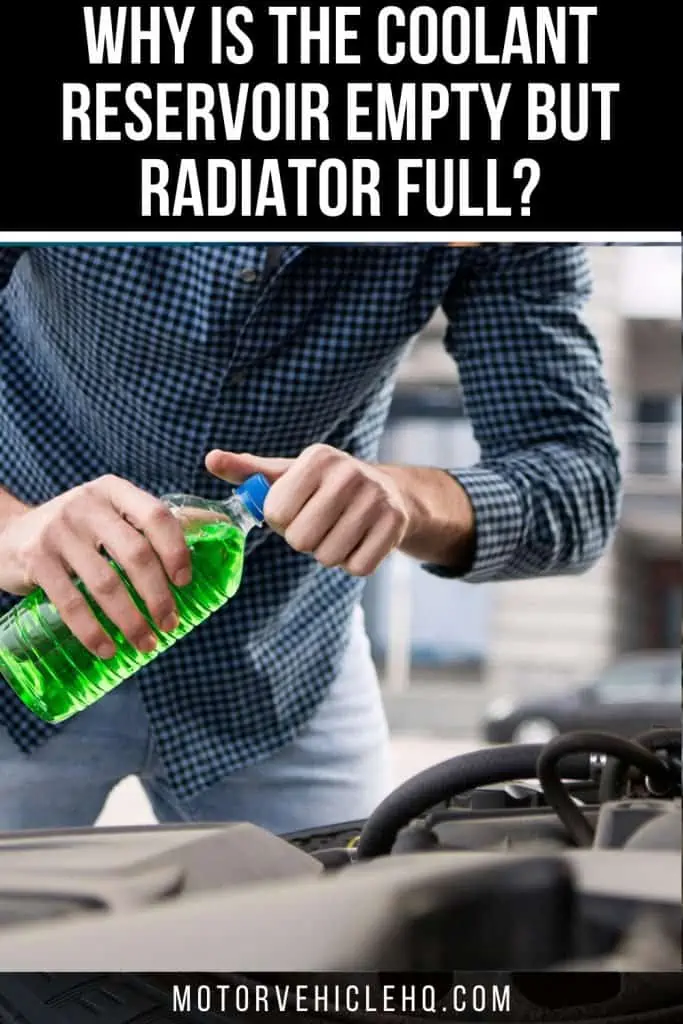

Jim Wicks is the founder of MotorVehicleHQ. With over two decades of experience in the automotive industry and a degree in Automotive Technology, Jim is a certified car expert who has worked in various roles ranging from a mechanic, car dealership manager, to a racing car driver. He has owned more than 20 cars over the past 15 years. Ask him about any vehicle you see on the road and he can tell you the make, model and year. He loves the aesthetics of all things cars, and keeps his vehicles in pristine condition.
In his free time, Jim enjoys getting his hands dirty under the hood of a classic car or taking long drives along the country roads. His favorite car? A 1967 Shelby GT500, a true classic that, according to Jim, “represents the pure essence of American muscle.”
